Last year, guaged porcelain tile—large-size panels and slabs in a variety of designs, including faux stone and wood looks—dominated European ceramic tile shows, and the appetite for slim products in ever-larger sizes shows no sign of waning. Other trends—rich colors, oversize patterns, and lively geometrics—suggested a return to optimism.
Of the many advantages of guaged porcelain, the clean aesthetic of fewer grout lines is perhaps No. 1. Porcelain is also highly scratch- and stain-resistant and is easy to clean. In exterior counter top applications, porcelain slabs won’t freeze or thaw, nor will they yellow over time, the industry claims. They also cost less than many natural stones and are comparable to a premier quartz product, says Lindsey Waldrep, vice president of marketing for tile manufacturer Crossville.
Astral Plane is a stone-look porcelain tile collection consisting of rectifi ed fi eld tiles in four colors and four sizes. The domestically made tile can be mixed and matched to create a variety of patterns.
Advances in digital printing have refined the depictions of natural stone and other materials in porcelain, making them competitive with their real-life counterparts. Furthermore, dimensional patterns that would otherwise be expensive to produce in marble and stone are being printed on porcelain at little to no added cost.
Gauged porcelain’s availability in multiple sizes and thicknesses is expanding its use beyond traditional floor and wall applications. European manufacturers have introduced bathroom vanity collections featuring porcelain veneers and in the kitchen have outfitted porcelain countertops with concealed induction burners for cooking.
Designers are also employing the tiles to dramatic effect on fireplace surrounds, “especially in big living rooms with two-story ceilings,” Waldrep says. With appropriate support behind the panels, holes can be drilled into them for hanging art or lighting. But, unlike drywall, they can’t be patched, so you need to plan for them.
Rex brand’s La Roche porcelain stoneware series recreates the look of French sedimentary stone. The line is available in a 3/8-inch-thick size for indoor applications, 1/4-inch-thick oversize panels, and 3/4-inch-thick outdoor pavers.
Though enthusiastic, U.S. adoption of large-format porcelain, especially in the extra-large sizes, lags behind Europe, where jumbo slabs measuring up to 126 inches in varying thicknesses from 6.5 mm to 20 mm are being manufactured, says Giancarlo Macchioni, head of marketing and research and development for Emilgroup, the parent company of several Italian ceramic tile brands.
Stateside, 12 inches by 24 inches remains the format of choice, with growing demand for 18 inches by 36 inches and 24 inches by 48 inches, notes Ryan Fasan, technical consultant and speaker for Tile of Spain. Beyond that, buy-in is modest.
Reasons for the tepid adoption are many. Homes aren’t always built with floors and walls sufficiently even to accommodate over size tile, Fasan says. “If there’s a change in slope of more than 1/8 inch over 16 feet, it has to be prepped out, and doing so after the fact becomes very expensive.” Locating an experienced installer for countertop and other unconventional applications can also be a challenge. “We’re seeing it mostly on walls, at this point,” says Jennifer Luce Hinesman, lead designer for Ann Arbor, Mich.-based home builder Meadowlark Design+Build. Another obstacle is the mindset that smaller spaces appear bigger with smaller tile. But Fasan counters that fewer grout lines could also achieve that effect.
Evolving technology is making installation easier. “Of significant importance are the racks developed to move and position tiles, lippage minimization systems to align panels or slabs with each other, and very large cutting tools that can handle tiles over 3 meters long,” says Bill Griese, director of standards development and sustainability initiatives at the Tile Council of North America (TCNA).
Wood-look porcelain continues to appeal to homeowners as a hardy, low-maintenance alternative to the real thing. According to Macchioni, the category is a top performer for Emilgroup. In the U.S., the popularity of luxury vinyl tile has softened the demand for 8-inch-by-48-inch and 8-inch-by-36-inch planks, but sales of 12-inch-by-48-inch and 12-inch-by-36-inch sizes remain strong, Fasan says.
Casablanca mimics the appearance of traditional Moroccan handmade terra-cotta tile. It includes 6-inch hexagonal tiles and 5-inch-square pieces in a gloss or matte finish. Eight solid colors and four deco colors are available.
Concrete, metal, and terrazzo looks were plentiful at European shows last year and will likely trend in 2019. So, too, will interpretations of classic encaustic and majolica tiles, as well as “ceramic wallpaper” designs featuring floral and Art Deco-inspired geometric patterns. “Botanicals are still in style and they’re big and overscale,” Waldrep says, and the 2018 Cersaie trade show brimmed with triangles, rhomboids, and hexagons both as actual tile shapes and in printed decorations.
In flooring, Fasan is seeing the return of small-format porcelain tile sizes from 5-inch and 8-inch squares to 8-inch-by-16-inch rectangles. For outdoor applications, porcelain pavers are gaining market share while expanding in size from 24-inch to 36-inch squares, notes Gianni Ruberti, sales rep for Italian tile manufacturer Mirage.
Clayhaus Ceramics, Photo by Ian Stout
Signal is a collection of 3 7/8-inch-square dimensional tiles that can be combined in a wide array of patterns for either large or small wall applications. Available in more than 100 matte and gloss glaze colors and six designs.
Much of the buzz in the ceramic industry has focused on ever-bigger tiles, but Waldrep has also noticed movement in the opposite direction. “Instead of the traditional 1-inch penny rounds, I’ve seen 1/2-inch,” she says. “I’ve also seen itty-bitty Chiclet-looking mosaic tile, as opposed to the traditional 2-by-2-inch size.”
As to color, marble looks have been darkening, while neutrals are becoming warmer, says Roxanne Morris, member and media relations manager for TCNA. Saturated greens, blues, and other jewel tones are also trending, which is refreshing, says Bonnie Hoeker, of New York interior design firm Branca. For Waldrep, the return of rich color is a positive sign: “I think whenever you see brights, it means the economy is good, so that’s awesome.”
This story originally appeard in the Winter 2019 issue of PRODUCTS magazine. See the print version here.

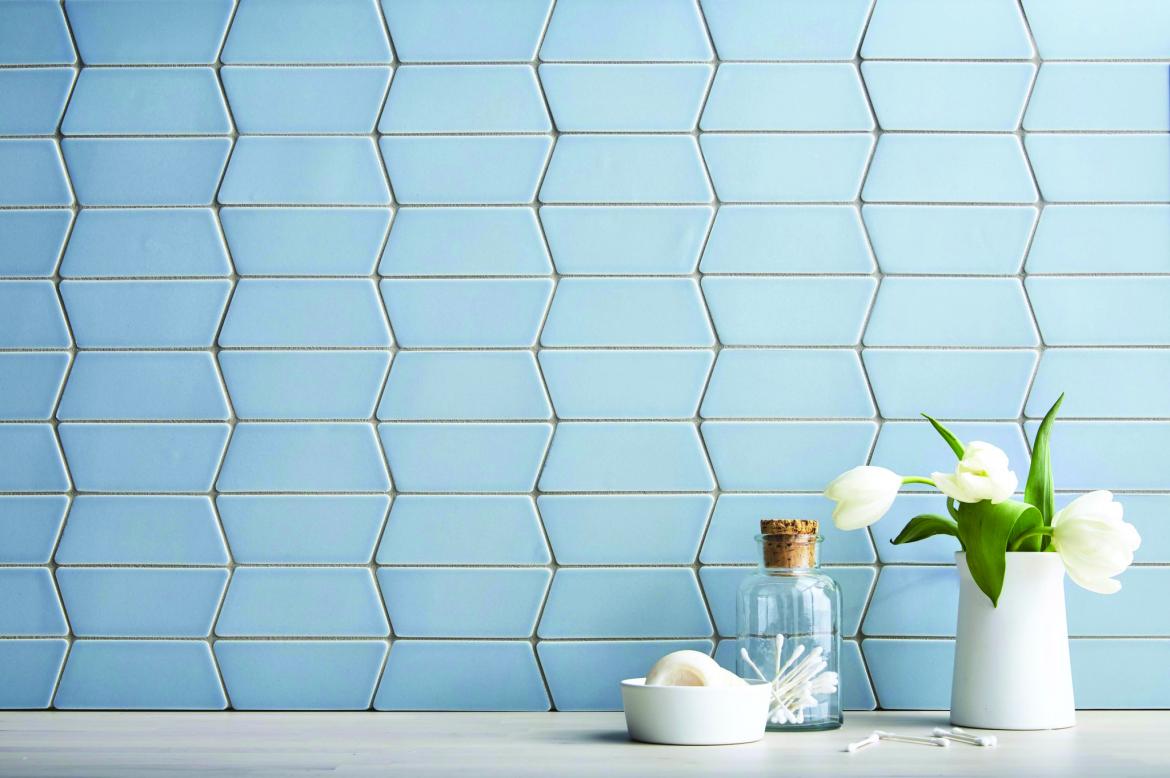
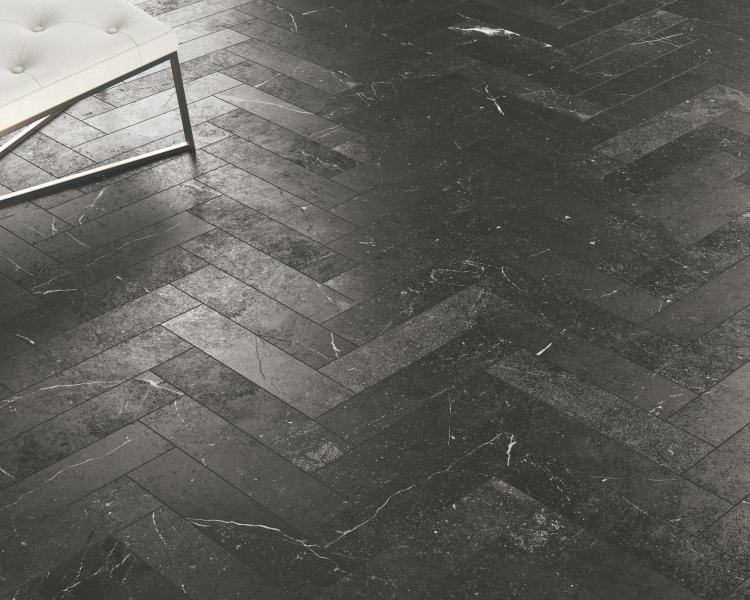
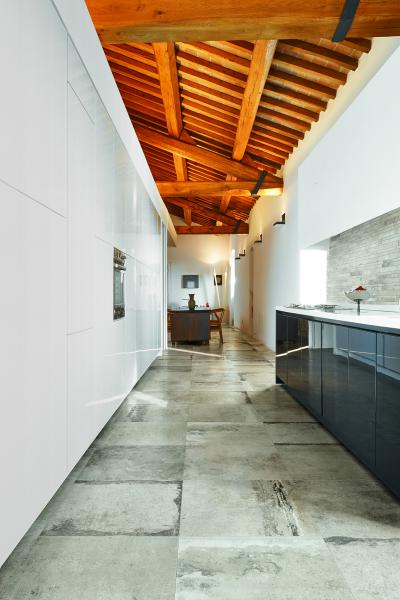
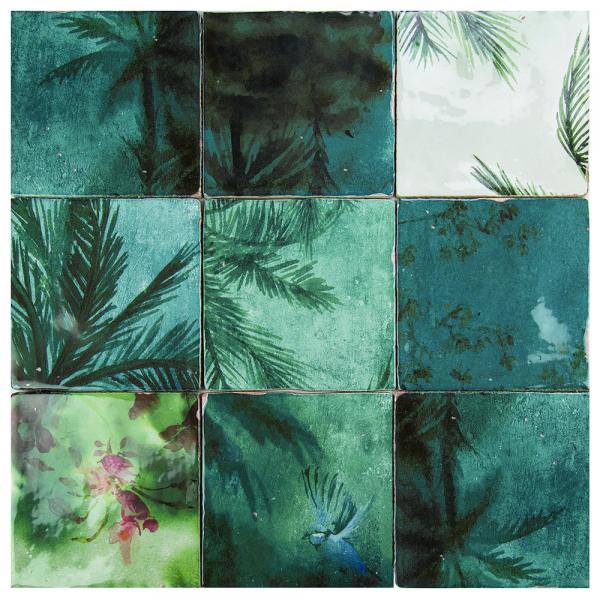
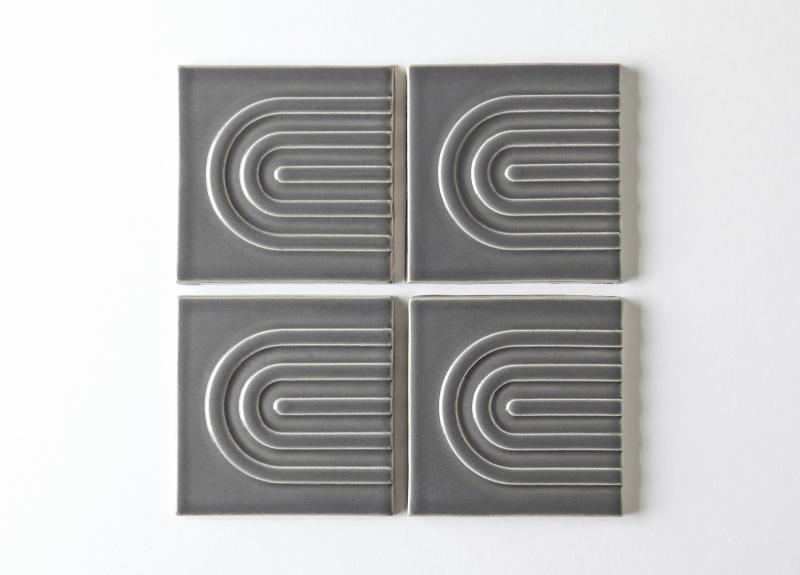
Add new comment